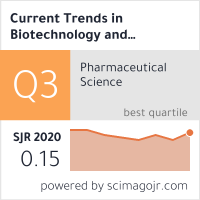The Potential Impact of Probiotics Along with Prebiotic Against the Dermatic Pathogen Staphylococcus aureus: Isolation and Characterization
DOI:
https://doi.org/10.5530/ctbp.2025.2.12Keywords:
Probiotics, Prebiotics, Skin microbiome, Skin diseasesAbstract
In recent years, probiotics and prebiotics are now well known for their expanded clinical applications beyond the gut microbiome to the skin microbiome by managing several skin disorders from acne to skin cancer. Lactobacilli and Bifidobacterium were extracted from non-dairy origins such as honey, tomato, and banana. The obtained isolates, recognized as Lactiplantibacillus pentosus, Lactiplantibacillus plantarum, and Bifidobacterium animalis, underwent detailed analysis to assess their probiotic qualities. This assessment involved various morphological and biochemical tests, including the catalase test, pH tolerance, temperature resistance, salt sensitivity, antibiotic susceptibility, and antimicrobial activity. All three isolates showed increased growth under skin-like conditions including higher growth at pH 4 to 5, at wide range of temperature and at various salt concentrations. This research paper deals with the isolation of Lactobacilli and Bifidobacterium from non-dairy sources and further characterization to evaluate their antibiotic sensitivity against Ampicillin, Penicillin, Gentamycin, Ciprofloxacin, and Tetracycline and to study their antimicrobial effect against the main skin’s opportunistic pathogen Staphylococcus aureus, that causes approx. 80% of skin diseases. Furthermore, research was undertaken to formulate optimal synbiotics. This involved assessing the preferential growth of isolated probiotics in the presence of prebiotics, specifically inulin, following an evaluation of the isolates’ activity scores both with and without prebiotic supplementation.



